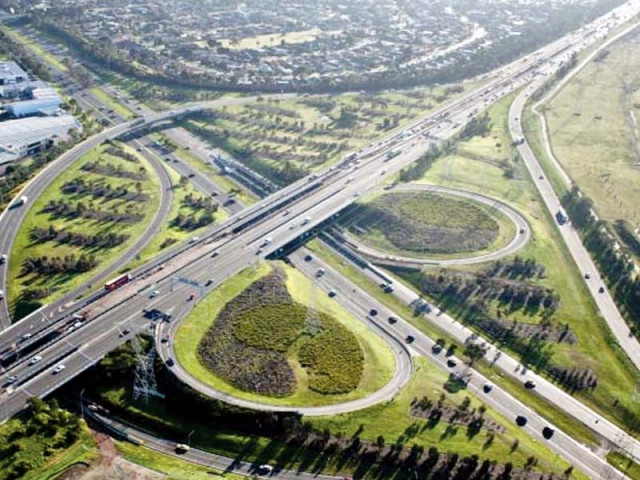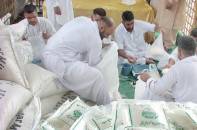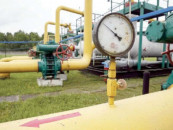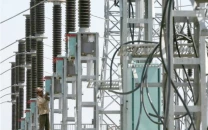Blue economy: a source of economic turnaround
This sector has served as engine of development for several countries

About 10% ($1.5 trillion) of China’s gross domestic product (GDP) is contributed by its blue economy. Thus, the sector, and especially shipping, has served as an engine of development for several countries.
Our Quaid also had a vision of establishing a fleet of 100 ships and economic independence for Pakistan. This article is an attempt to take stock of where we stand vis-a-vis his above objectives.
In 1947, we inherited only four privately owned cargo vessels. By 1963, the fleet comprised 53 privately owned vessels. In 1974, the industry was nationalised. Many present this as the cause for all of its later illnesses, although the success or failure of a value chain depends on how it is managed.
In my view, it was rather the lack of direction in conjunction with other factors, discussed herein, which affected its development.
The private industry was developing steadily till 1963 when a public sector enterprise (PSE) by the name of National Shipping Company (NSC) was created. However, its first board of nine members comprised a bureaucrat as chairman with a naval officer as its CEO and another as a board member amongst others.
The arrangement does not seem to be an appropriate start for an organisation meant to serve purely commercial objectives. Pertaining business leaders adept in shipping, trade and commerce could definitely have been a better choice.
Still, we observed some growth in the national fleet till 71. In 1973, NSC’s board went through a structural change with the reduction in directors to five only, though with no major material change.
In 1974, nine private companies, which had 26 ships, were nationalised and merged to form Pakistan Shipping Corporation (PSC). In 1979, while targeting efficiency, NSC and PSC were integrated to form Pakistan National Shipping Corporation (PNSC) with no major change in governance structure or board’s composition.
Thus, only 12 years later, we observe PNSC engaging a renowned consultant for analysing its performance issues, who recommended restructuring and privatisation.
However, the status quo prevailed. Resultantly, we now have only 11 vessels with PNSC annually generating a meagre net profit of $13 million and Pakistan dependent on foreign shipping lines for 90% of its trade entailing annual expenses of billions of dollars in freight.
Regional countries
Bangladesh has 310 vessels. Also, it has 10,000 inland and coastal ships, which transport most of its oil products and cargo and 35% of passengers across the country. Similarly, India has more than 200 shipping companies with Shipping Corporation of India, a PSE, holding 33% of the market. Its major strength is its eight-member board with four in-house professionals and two independent and government directors each.
India’s merchant fleet comprises 806 vessels. For effective integration, it also has the National Shipping Board where all the stakeholders are represented.
Similarly, China’s merchant fleet comprises 3,197 ships. Cosco Shipping, a Chinese PSE, alone has a fleet of 1,371 vessels (annual revenue $27 billion). Its fundamental strength is its eight-member professional board with a chairman who is an engineer having extensive leadership experience of shipping, tourism, etc.
Shipbuilding & shipbreaking
Karachi Shipyard – the only shipyard in Pakistan – seems dependent on subsidies and orders from the Navy, whereas the industry (current global market size of $34 billion) has, otherwise, turned around many economies.
China, with 40% share in the global business, is now leading it, followed by Japan and South Korea, with India sharing 1% of global production through its 27 shipyards.
Bangladesh also has 50 shipyards where inland, coastal and fishing fleet is built. In 2008, it also exported an ocean going ship to Denmark.
As to shipbreaking, our Gadani yard annually produces 15% of Pakistan’s re-rolling steel. The success seems rooted in our indifference to the industry’s safety hazards. Thus, it is known for frequent accidents, unsafe waste handling and disposal practices and abject poverty of its workers.
Only in May 2021, a ship containing 1,500 tons of mercury-mixed oil was allowed to dock at Gadani. Similarly, a fire incident in 2016 caused 33 deaths.
Ports’ connectivity, coastal tourism & seafood
Effective communication necessitates an integrated transport system. However, due to gaps in the same, our ports fail to operate optimally.
For example, Gwadar was to serve as a major trade artery between China and Central Asia, and Middle East and Europe. However, so far connectivity issues seem to be affecting its performance. This would continue till the port is fully integrated through road and rail with Afghanistan, Central Asia and China.
Its transshipment potential is also a function of connectivity with other ports. For example, the Port of Singapore handles 20% of the global transshipment traffic because, with Port Liner Shipping Connectivity Index of 127.59, it is connected with 600 ports in 123 countries. As to Gwadar, the yardstick reports a meagre 4.27.
As to tourism, it annually contributes $9 trillion to the global GDP, 80% of which is shared by coastal tourism.
In Pakistan, the contribution is negligible against the potential of $4 billion per year because the latest Travel and Tourism Competitiveness Report of the World Economic Forum places Pakistan at 121 out of 140 countries with Spain on top and India at 34.
Similarly, Pakistan earns $0.45 billion from seafood exports against the potential of $2 billion.
What is to be done?
It is obvious that the governance capacity limitations of the sector are hampering its optimal contribution to our economy. If left unattended, then even the much-trumpeted panacea, ie privatisation, would also fail.
Gradual exodus of MNCs from the exploration and production sector and failure to attract new investors, Tuwairqi Steel and Reko Diq fiascos are a few examples of our inability to respond effectively to routine corporate sector challenges.
The only answer to the issue, in this era of knowledge-based economies, is a massive dose of meritocracy and professionalism at every level and major structural reforms in the PSEs’ governance.
Also, the introduction of Maritime Board representing all major stakeholders for integrated direction can greatly help. Dedicated teams of senior professionals and industry leaders can be constituted in its supervision for helping to accelerate development of the pertaining segments, ie shipping, shipbuilding, ports, etc.
We already have a highly successful model in the form of NCOC, which can be emulated for the given purpose with few improvisations.
Secondly, merchant shipping is a specialised business and needs deep relevant knowledge and leadership experience to run the business.
Thirdly, joint ventures for shipbuilding with other countries such as Bangladesh and South Korea need to be considered. Similarly, the unfortunate circumstances in Gadani need to be addressed on priority with the help of organisations like OECD and ILO.
Implementation of the above suggestions can help us in at least a delayed fulfillment of the above-mentioned Quaid’s dream.
The writer is a petroleum engineer and an oil and gas management professional
Published in The Express Tribune, November 22nd, 2021.
Like Business on Facebook, follow @TribuneBiz on Twitter to stay informed and join in the conversation.



















COMMENTS
Comments are moderated and generally will be posted if they are on-topic and not abusive.
For more information, please see our Comments FAQ